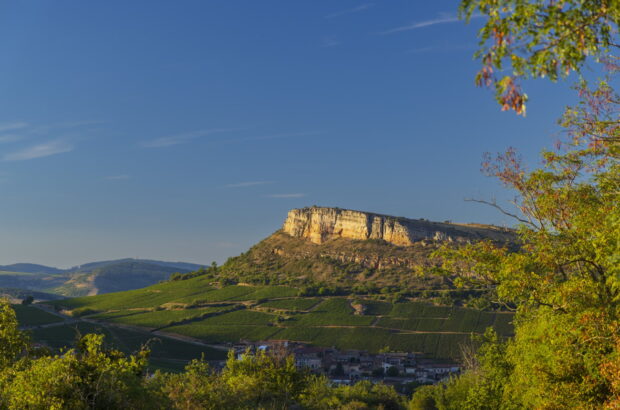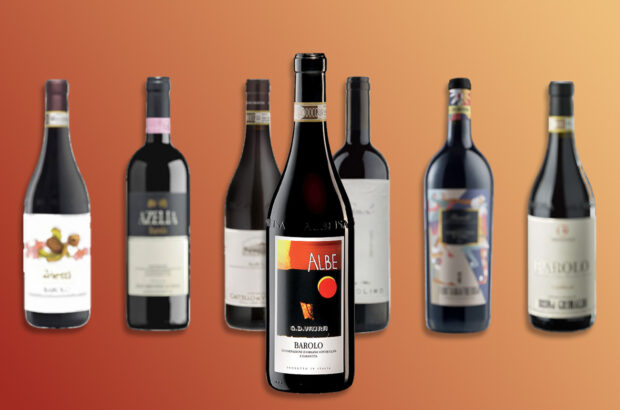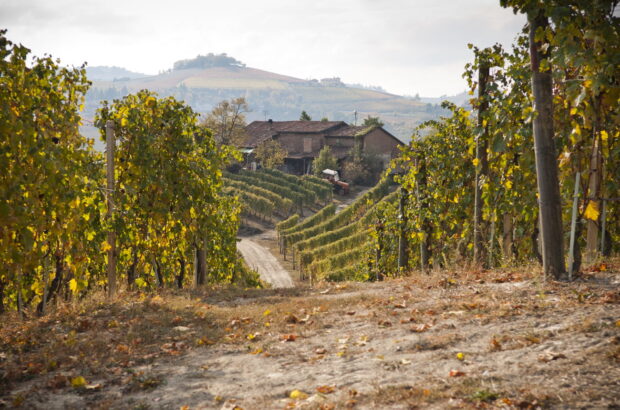If you were to develop from scratch a prototype of a wine region designed to appeal to the world’s most influential and fashionable sommeliers, you might well come up with a blueprint that sounds something like a description of the Canary Islands.
Scroll down for a selection of 18 Canary Island wines to try
The list of elements in Europe’s most southerly winemaking region is just, in emoji speak, ‘chef’s kiss’. Volcanic soils. Ungrafted vines so old they pre-date, in many cases, the phylloxera plague that swept through Europe (but not the Canary Islands) from the late 19th century. An unusual collection of grape varieties that you cannot find, as a group, anywhere else in the world. Talented, natural-oriented winemakers obsessed with low-intervention winemaking in out-of-the-way, extreme places. A patchwork of topographies, altitudes (including some of the highest vineyards in Europe) and Atlantic-influenced microclimates allowing for a Burgundian level of minutely focused terroir expression. Some genuinely unique traditional viticultural practices still in use… I could go on.
{"content":"PC9wPgo8aDI+UmVwdXRhdGlvbiB0cmFuc2Zvcm1hdGlvbjwvaDI+CjxwPkFsbCBvZiB3aGljaCBoZWxwcyBleHBsYWluIHdoeSB0aGVyZSBoYXMgYmVlbiBzdWNoIGEgYnV6eiBhcm91bmQgQ2FuYXJ5IElzbGFuZCB3aW5lcyBpbiB0aGUgdHJlbmRpZXIgY29ybmVycyBvZiB0aGUgd2luZSB3b3JsZCBvdmVyIHRoZSBwYXN0IGRlY2FkZSwgYSBwZXJpb2QgZHVyaW5nIHdoaWNoIGl0cyBwcmV2aW91cyB2aW5vdXMgcmVwdXRhdGlvbiDigJMgYXMgYSBwdXJ2ZXlvciBvZiBzby1zbyB3aW5lcyBhaW1lZCBhdCB0aGUgdG91cmlzdCB0cmFkZSBvbiB3aGljaCB0aGUgYXJjaGlwZWxhZ28gcmVsaWVzIGZvciBpdHMgbWFpbiBzb3VyY2Ugb2YgaW5jb21lIOKAkyBoYXMgYmVlbiBjb21wbGV0ZWx5IHRyYW5zZm9ybWVkLjwvcD4KPHA+QnV0IHRoYXQgdmVyeSBkaXN0aW5jdGl2ZW5lc3MgYWxzbywgcGVyaGFwcywgZXhwbGFpbnMgd2h5IENhbmFyeSBJc2xhbmQgd2luZXMgaGF2ZSB5ZXQgdG8gbWFrZSB0aGUgbGVhcCBpbnRvIGFueXRoaW5nIGFwcHJvYWNoaW5nIHRoZSBtYWluc3RyZWFtLiBXZSBhcmUgdmVyeSBmYXIgZnJvbSB0aGUgZXZlcnlkYXksIGhpZ2gtdm9sdW1lLCBzdXBlcm1hcmtldCBTcGFpbiBoZXJlLjwvcD4KPHA+PGRpdiBjbGFzcz0iYWQtY29udGFpbmVyIGFkLWNvbnRhaW5lci0tbW9iaWxlIj48ZGl2IGlkPSJwb3N0LWlubGluZS0yIiBjbGFzcz0iaXBjLWFkdmVydCI+PC9kaXY+PC9kaXY+PC9wPgo8cD5UaGVyZSBpcyBubyA8c3Ryb25nPjxhIGhyZWY9Imh0dHBzOi8vd3d3LmRlY2FudGVyLmNvbS93aW5lL2dyYXBlLXZhcmlldGllcy90ZW1wcmFuaWxsby10aW50by1maW5vLyIgdGFyZ2V0PSJfYmxhbmsiIHJlbD0ibm9vcGVuZXIgbm9yZWZlcnJlciI+VGVtcHJhbmlsbG88L2E+PC9zdHJvbmc+IG9yIDxzdHJvbmc+PGEgaHJlZj0iaHR0cHM6Ly93d3cuZGVjYW50ZXIuY29tL3dpbmUvZ3JhcGUtdmFyaWV0aWVzL2FsYmFyaW5vLyIgdGFyZ2V0PSJfYmxhbmsiIHJlbD0ibm9vcGVuZXIgbm9yZWZlcnJlciI+QWxiYXJpbsyDbzwvYT48L3N0cm9uZz4sIGxldCBhbG9uZSA8c3Ryb25nPjxhIGhyZWY9Imh0dHBzOi8vd3d3LmRlY2FudGVyLmNvbS93aW5lL2dyYXBlLXZhcmlldGllcy9tYWxiZWMvIiB0YXJnZXQ9Il9ibGFuayIgcmVsPSJub29wZW5lciBub3JlZmVycmVyIj5NYWxiZWM8L2E+PC9zdHJvbmc+IG9yIDxzdHJvbmc+PGEgaHJlZj0iaHR0cHM6Ly93d3cuZGVjYW50ZXIuY29tL3dpbmUvZ3JhcGUtdmFyaWV0aWVzL3NhdXZpZ25vbi1ibGFuYy8iIHRhcmdldD0iX2JsYW5rIiByZWw9Im5vb3BlbmVyIG5vcmVmZXJyZXIiPlNhdXZpZ25vbiBCbGFuYzwvYT48L3N0cm9uZz4uIFRoZSBiZXN0IG9mIENhbmFyeSBJc2xhbmQgd2luZSwgcmVkIGFuZCB3aGl0ZSwgYWx3YXlzIGhhcyBhIHRvdWNoIG9mIHNvbWV0aGluZyB3aWxkIGFib3V0IGl0LCBhIG1peCBvZiBzdXJnaW5nIGFjaWRpdHkgYW5kIGVhcnRoeS1zbW9reSBhbmQgbWluZXJhbCBub3Rlcy4gVGhleSBhcmUgbWFkZSBpbiBzbWFsbCBxdWFudGl0aWVzIGZyb20gdmVyeSBsb3cteWllbGRpbmcgb2xkIHZpbmVzLCBmcm9tIGdyYXBlIHZhcmlldGllcyB3aXRoIGxpdHRsZSB0byBubyBjb25zdW1lciByZWNvZ25pdGlvbjogTGlzdGHMgW4gQmxhbmNvIChha2EgUGFsb21pbm8pLCBWaWphcmllZ28gQmxhbmNvLCBNYXJtYWp1ZWxvLCBHdWFsIChCdWFsKSBhbmQgTWFsdmFzacyBYSBmb3Igd2hpdGVzOyBOZWdyYW1vbGwsIEJhYm9zbyBOZWdybyAoVHJvdXNzZWF1LCBCYXN0YXJkbyksIFZpamFyaWVnbyBOZWdybyAoQ2F0YWxvbmlh4oCZcyBTdW1vbGwpIGFuZCBMaXN0YcyBbiBOZWdybyBmb3IgcmVkcy4gVGhleSB0ZW5kIHRvIGJlIGxvdyBpbiBhbGNvaG9sIGFuZCwgd2hpbGUgb2Z0ZW4gY29tcHVsc2l2ZWx5IGRyaW5rYWJsZSwgdGhleeKAmXJlIG5ldmVyIG9idmlvdXMgb3Igc2hvd2lseSBjb25jZW50cmF0ZWQuPC9wPgo8ZGl2IGNsYXNzPSJpbmplY3Rpb24iPjwvZGl2Pgo8cD5UaGF0IHRoaXMgcmVtYWlucyBzb21ld2hhdCBuaWNoZSBhcyBhIHdpbmUgcmVnaW9uIHdhcyBjZXJ0YWlubHkgYXBwYXJlbnQgYXMgSSB3YXMgcHV0dGluZyB0b2dldGhlciB0aGlzIGxpc3Qgb2YgMTggb2YgbXkgZmF2b3VyaXRlIENhbmFyeSBJc2xhbmQgd2luZXM6IHRoZXJlIGFyZSBzdGlsbCBub3QgYXMgbWFueSBhdmFpbGFibGUgdG8gYnV5IGluIHRoZSBVSyAob3IgVVNBKSBhcyBJIHdvdWxkIGxpa2UuPC9wPgo8ZGl2IGNsYXNzPSJhZC1jb250YWluZXIgYWQtY29udGFpbmVyLS1tb2JpbGUiPjxkaXYgaWQ9InBvc3QtaW5saW5lLTMiIGNsYXNzPSJpcGMtYWR2ZXJ0Ij48L2Rpdj48L2Rpdj4KPHA+SW1wb3J0cyDigJMgYW5kIG15IGxpc3Qg4oCTIGFyZSBkb21pbmF0ZWQgYnkgdGhlIGxhcmdlc3QgaXNsYW5kLCBUZW5lcmlmZSwgd2hpY2ggd2l0aCBpdHMgZml2ZSB2ZXJ5IHZhcmllZCBET3MgaXMgYm90aCB0aGUgYmlnZ2VzdCBhbmQgdGhlIG1vc3QgZHluYW1pYyBwcm9kdWNlciwgd2l0aCBhIHByZXBvbmRlcmFuY2Ugb2YgaXRzIGxlYWRpbmcgdmlnbmVyb25zLjwvcD4KPHA+TWFrZSBubyBtaXN0YWtlLCB0aG91Z2g6IHRoZXNlIGFyZSBzb21lIG9mIFNwYWlu4oCZcyDigJMgdGhlIHdvcmxk4oCZcyDigJMgbW9zdCBleGNpdGluZywgbW9zdCBhcnJlc3RpbmdseSBkaWZmZXJlbnQsIG5vdCB0byBzYXkgZmluZXN0IHdpbmVzLjwvcD4KPHA+Cg=="}
Tasting notes and scores for 18 Canary Island wines to try
{}
{"wineId":"66907","displayCase":"standard","paywall":true}
{"wineId":"66908","displayCase":"standard","paywall":true}
{"wineId":"66909","displayCase":"standard","paywall":true}
{"wineId":"66910","displayCase":"standard","paywall":true}
{"wineId":"66911","displayCase":"standard","paywall":true}
{"wineId":"66912","displayCase":"standard","paywall":true}
{"wineId":"66913","displayCase":"standard","paywall":true}
{"wineId":"66914","displayCase":"standard","paywall":true}
{"wineId":"66915","displayCase":"standard","paywall":true}
{"wineId":"66916","displayCase":"standard","paywall":true}
{"wineId":"66917","displayCase":"standard","paywall":true}
{"wineId":"66918","displayCase":"standard","paywall":true}
{"wineId":"66920","displayCase":"standard","paywall":true}
{"wineId":"66919","displayCase":"standard","paywall":true}
{"wineId":"66922","displayCase":"standard","paywall":true}
{"wineId":"66923","displayCase":"standard","paywall":true}
{"wineId":"66921","displayCase":"standard","paywall":true}
{"wineId":"66924","displayCase":"standard","paywall":true}
{}
Related articles











